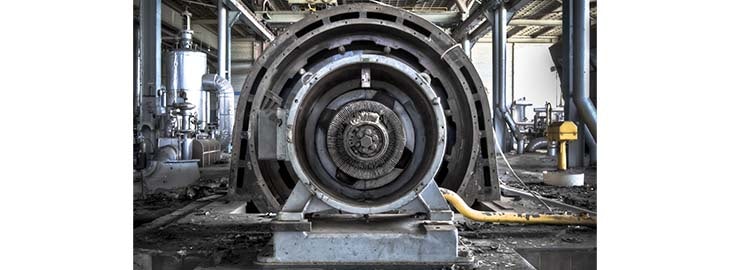Overspeed situations on rotating machinery should be prevented at all costs. Even the slightest overspeed situation could lead to mechanical stress that causes rotating machine parts to deform. More serious overspeed situations could cause the blade ends to rub against the housing. The most severe overspeed situations could cause the turbine blades to come loose, which results in machine parts penetrating the housing. This article describes the most common causes of overspeed.
Broken shaft
When a drive shaft breaks (e.g., due to misalignment), the turbine will suddenly experience minimal resistance. With the remaining driving force (fuel or steam), the rotor will be able to accelerate rapidly and exceed the machine’s mechanical limits. An advanced overspeed detection system will detect when a rotating machine exceeds the maximum tolerable acceleration threshold, trigger an alarm and initiate a trip function even before an actual overspeed situation occurs. However, it will take some time for the driving force to disappear, during which the machine could still reach a dangerous speed level. Therefore, it is essential to have in-depth knowledge of your machine and know which accelerations are acceptable at every speed.
“An advanced overspeed detection system will initiate a trip function on speed acceleration even before an actual overspeed situation occurs.”
Valve malfunctioning
Control valves / safety valves are important mechanical parts of a machine. The consequences of failing control valves can be significant. When a control valve of a steam turbine is stuck or when one of its pressure valves remains opened, it could lead to excessive driving force on the shaft. Just as with a broken shaft, this could cause excessive acceleration and overspeed.
Testing mechanical overspeed devices
Mechanical / hydraulic overspeed protection can fail during an overspeed test. These systems have failure modes which can only be tested when performing an actual overspeed trip. When the system is stuck due to varnish or dirt, the mechanical overspeed device will not be able to shut down the machinery when required.
Human error
Even though most systems are automated, there is still room for human actions and interference. For example: leaving an override in place after a maintenance stop. Another example is an operator error. This has become less and less likely due to technological developments that require minimal human input, but it remains one of the main overspeed causes for rotating machinery.
Incorrect sensor input
The speed signal could be corrupted by an incorrectly mounted or adjusted sensor or system configuration errors, which causes an incorrect input in the system logic. An incorrect sensor input could also affect the control system, which could subsequently lead to an overspeed situation. This would leave the rotating machine vulnerable to undetected overspeed situations.
Control system failure
A failure of the speed control system can lead to an overspeed situation. A speed control system is used to regulate the speed of the rotating machine. An invalid input signal or programming error could set a failure of the speed control system in motion, which could subsequently cause overspeed.

